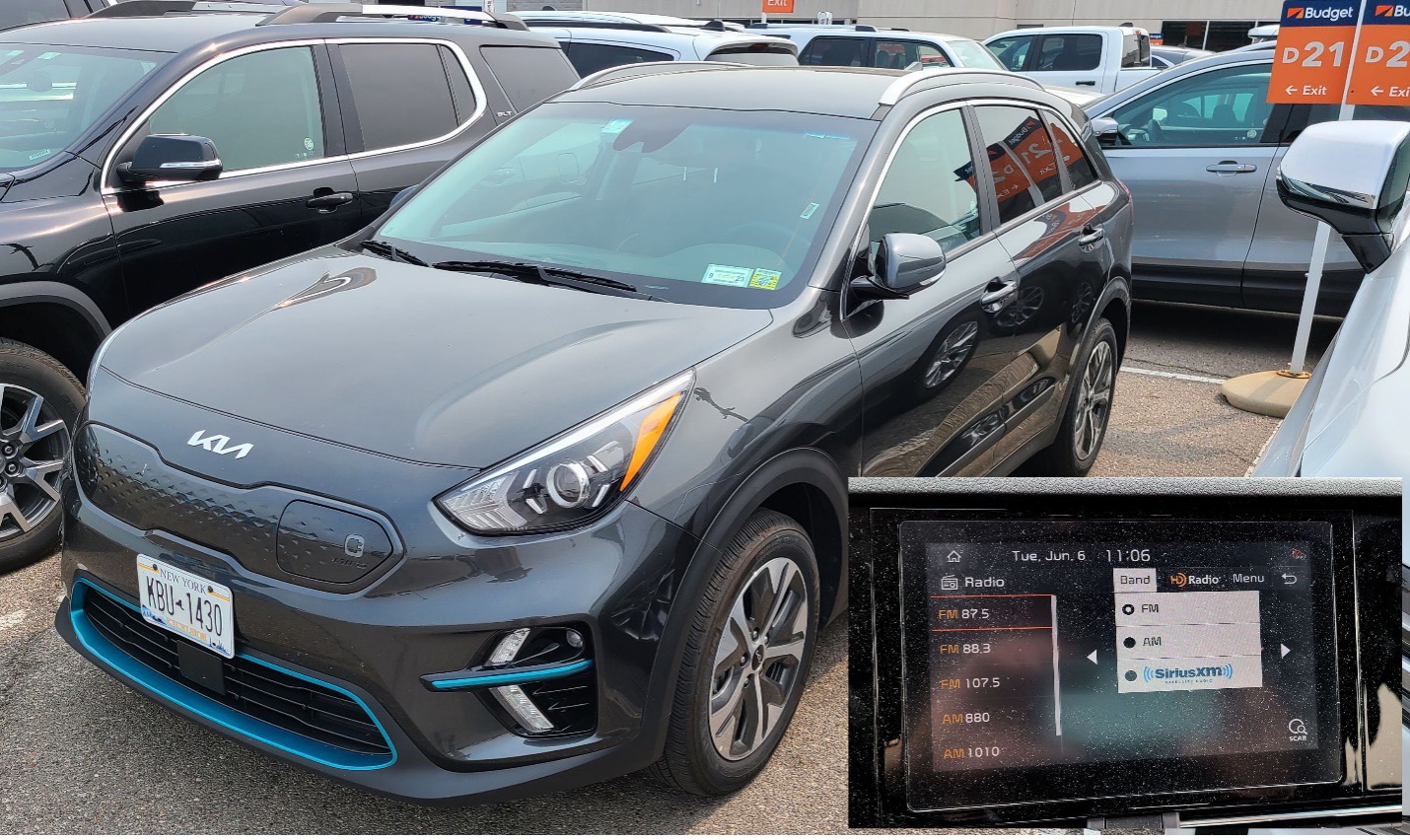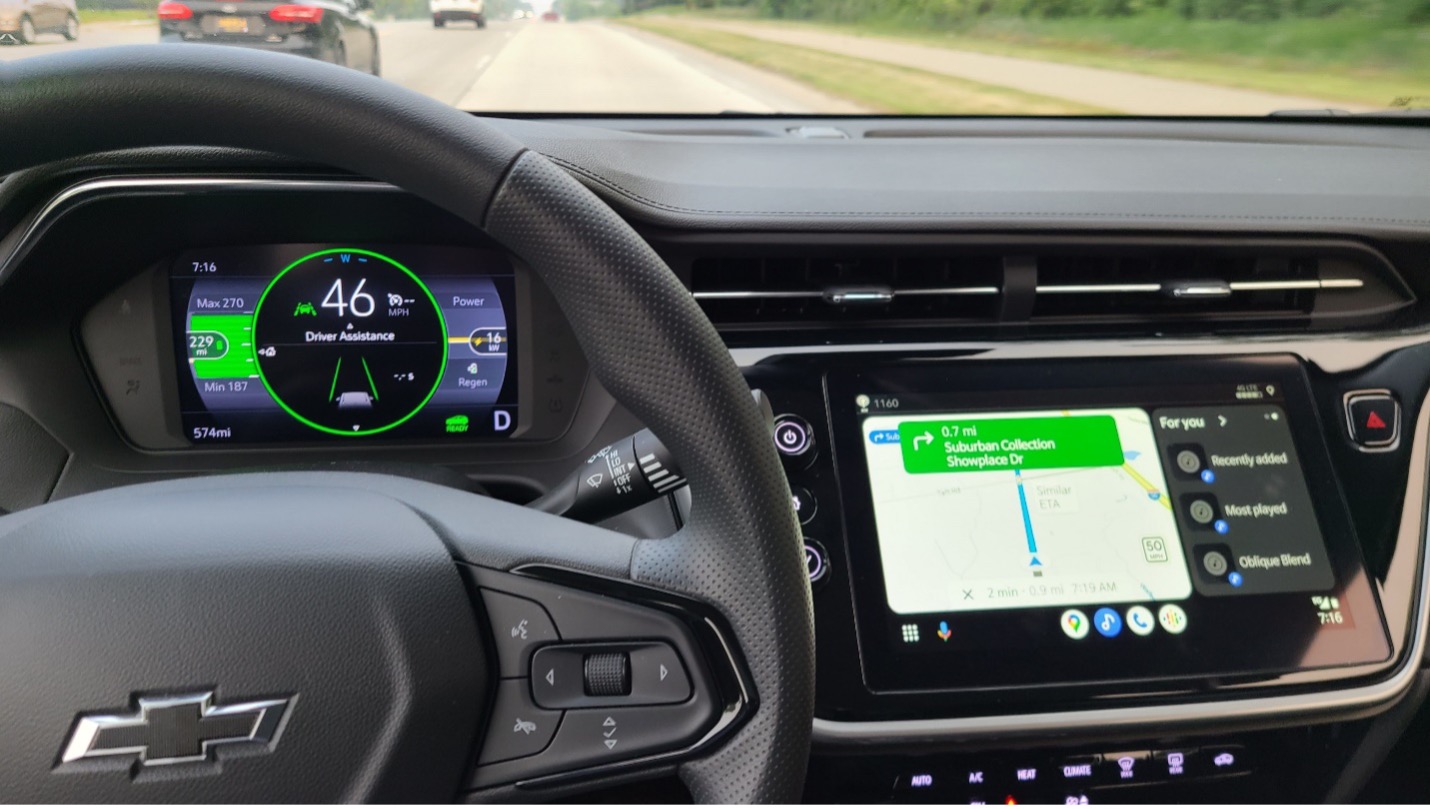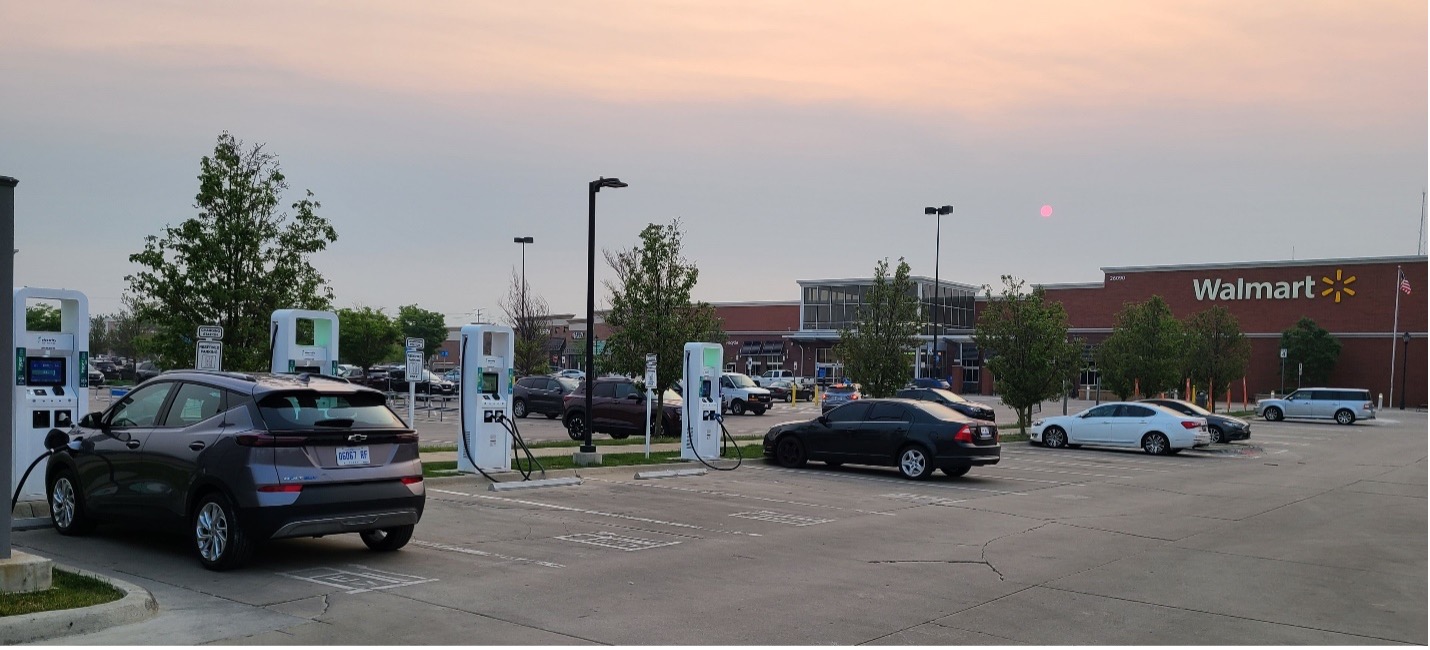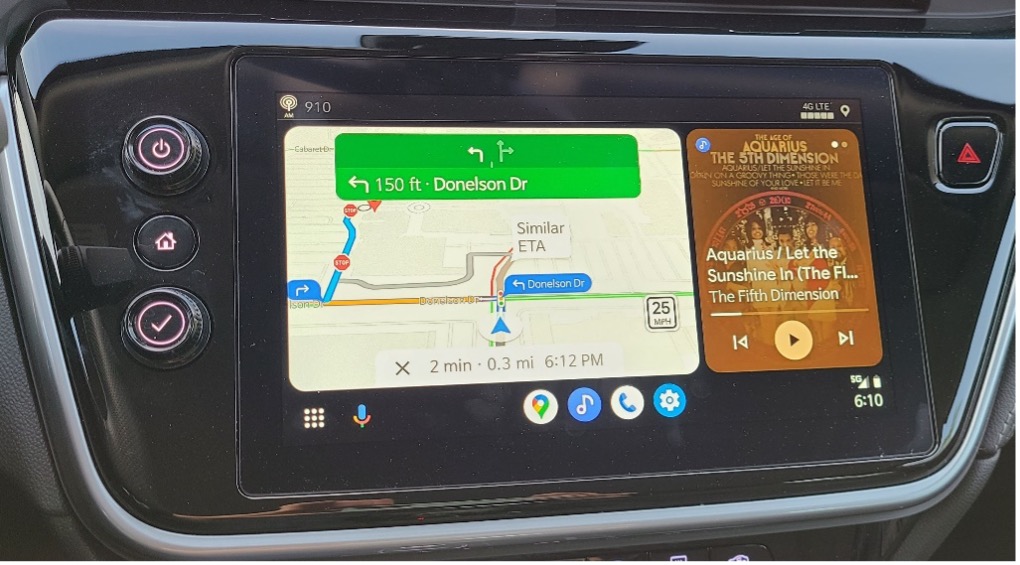Both Detroit and AM radio have been hot news topics lately as the broadcasting industry and others respond to the automotive industry’s decisions on removing AM radio from some vehicles, electric vehicles (EVs) in particular. I had the opportunity to visit Detroit in early June for AutoTech: Detroit 2023 and decided to rent an EV and see for myself what the radio listener and EV rental customer experience would be like in Motor City.
Renting an EV: I arrived in Detroit by plane at Detroit Metropolitan Wayne County airport and proceeded to the Budget rental car facility to pick up my rental EV. It was reserved in advance and at a cost comparable to a gas-powered vehicle. My car was a late-model Kia Nero EV, a nice, compact SUV, but I was dismayed to discover it only had a 20% charge, surprised as well since the contract I just signed required me to return the vehicle with at least a 70% charge or I would face a $35 fuel fee. I proceeded to swap the Kia for a second vehicle, but before swapping I turned on the Kia infotainment system to confirm that this EV would receive AM radio (see first photo below).

Kia Nero EV (inset shows radio bands including AM).
The second car was a brand new Chevy Bolt and this was a keeper. Full charge and a nice AM/FM infotainment system (but no HD Radio), the dash of the Chevy Bolt is seen in the next photo including the large, 10.2 inch color touch screen infotainment display showing Google Maps using Android Auto (more screen shots in a moment highlighting the radio).

Chevy Bolt EV with 10.2 inch touchscreen infotainment display.
I decided to charge the vehicle near the end of my stay (and avoid the $35 fuel charge) and located a charging station five minutes from my hotel in a Walmart parking lot (see photo below, my rental Chevy Bolt is on the far left). Two of four chargers were out-of-service and it took me two visits to this station to actually get a charge, but I did, spending one hour to get to over 90% (the Chevy Bolt is a relatively slow-charging EV, charged at only about 19 kW despite pulling up to a 150 kW station).

Chevy Bolt (on left) at charging station located in Walmart parking lot.
Listening to AM radio in an EV in Detroit: The AM radio listening experience in the Chevy Bolt EV was a perfectly typical AM auto radio experience. An AM-band station scan revealed 19 stations (see photo below at left) and I was able to receive them all. Some were clearer than others but there was no evidence of any speed-related interference like one would expect if the EV motors were causing AM band interference, and this was true from slow, parking lot speeds to high-speed highway travel. The absence of HD Radio technology meant that there would be no metadata for any AM station and you can see an example of the AM radio “now playing” screen in the photo below at right.

Chevy Bolt infotainment screen showing partial AM station list (left) and AM radio “now playing” screen (note the lack of metadata).
By contrast, both the FM radio station list (photo below at left) and FM now playing screen (photo below at right) are augmented with textual metadata delivered by the station’s Radio Data System (RDS) FM subcarrier.

Chevy Bolt infotainment screen showing partial FM station list (left) and FM radio “now playing” screen (including metadata delivered by the RDS FM subcarrier).
As illustrated by the two “now playing” screens shown above, this system does not make good use of screen real estate for broadcast radio, with no text or images for AM and no images for FM (text in the form of RDS RadioText is provided). The next screen shot shows how, on the other hand, Android Automotive makes excellent use of this real estate, showing a split-screen arrangement including Google Maps and Samsung Music to play back owned music.

Chevy Bolt infotainment screen showing Android Auto (Google Maps on the left and Samsung Music on the right). Note extensive use of graphics and text.
Summary: My EV rental car experience in Detroit was a good one, in particular because both cars I rented had AM radio in them, and the one I tested seemed to work just fine. The lack of HD Radio technology in the Chevy Bolt was disappointing as it means broadcasters are unable to bring a richer radio experience to their listeners on this dashboard. FM broadcasters can take best advantage of receivers like this by being sure to make full use of the RadioText feature of RDS.

